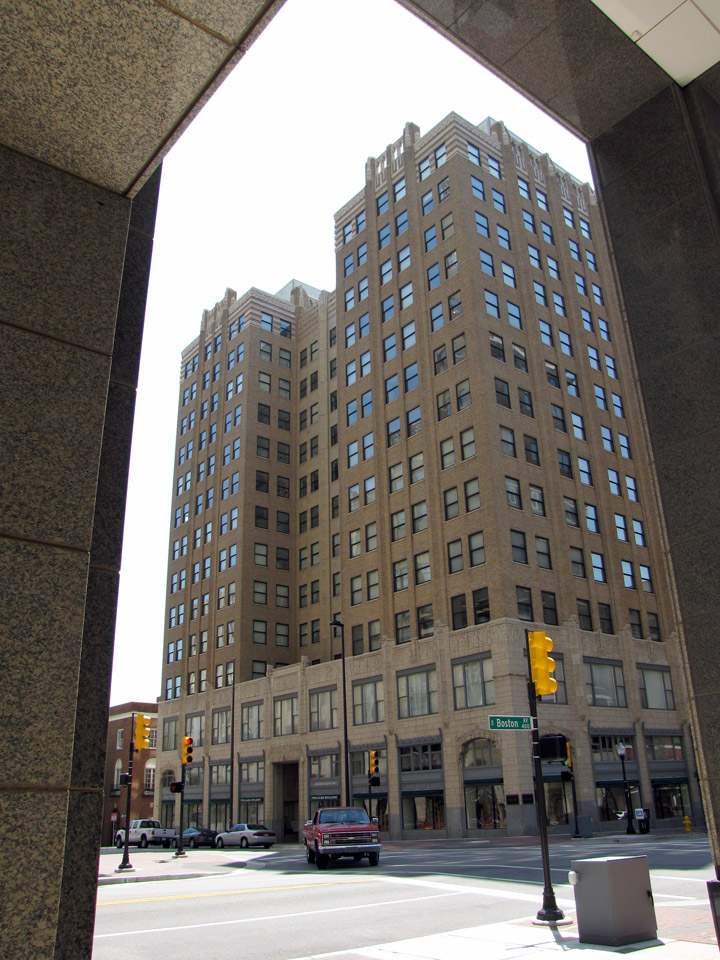

Philcade Building
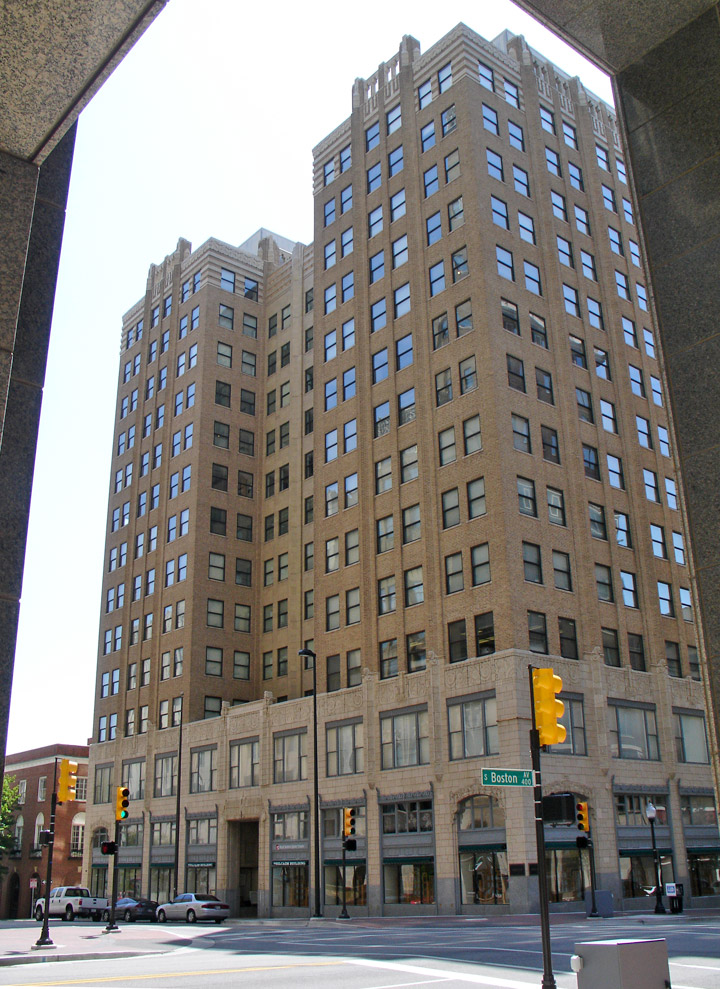
511 South Boston Avenue
Built: 1931
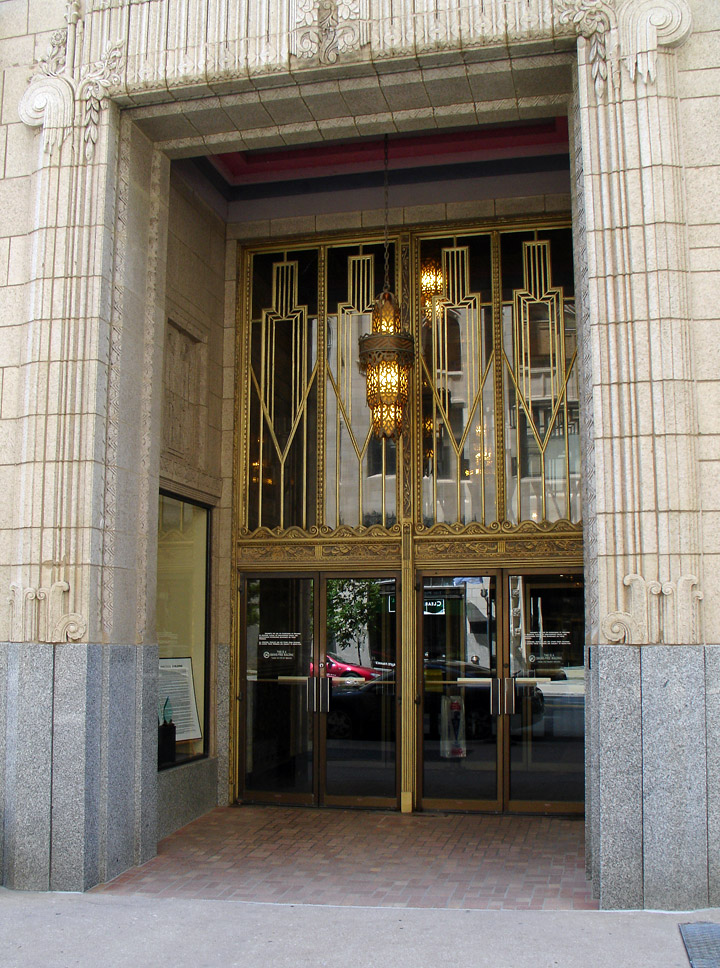
GPS
N 36 09.126
W 95 59.289
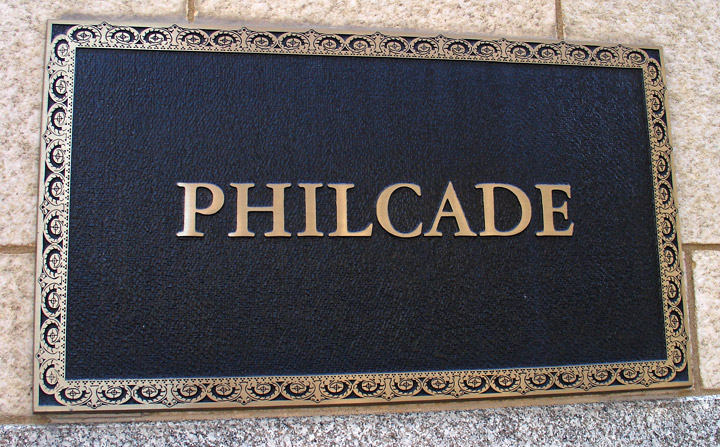
The Philcade Building is significant for its interior art work,
its architectural design, and its association with the developing oil industry.
The interior ground floor arcades of the building are surprisingly lavish.
Pilasters of fluted and polished St. Genevieve marble support an ornamental
plaster frieze covered with gold leaf at the mezzanine level. From this plaster
frieze, arches form a ceiling that is also covered with gold leaf and hand
painted with geometric designs executed in muted tones of red, blue, green,
purple, and brown, the favored colors of the Art Deco period. These designs
display the Zigzag Art Deco style of this era. An elaborate, bronze-filigreed
chandelier is suspended from the center of each design. The ceiling treatment is
complemented by the mahogany, glass, and bronze detailed store front units and
the tan and black terrazzo floor.
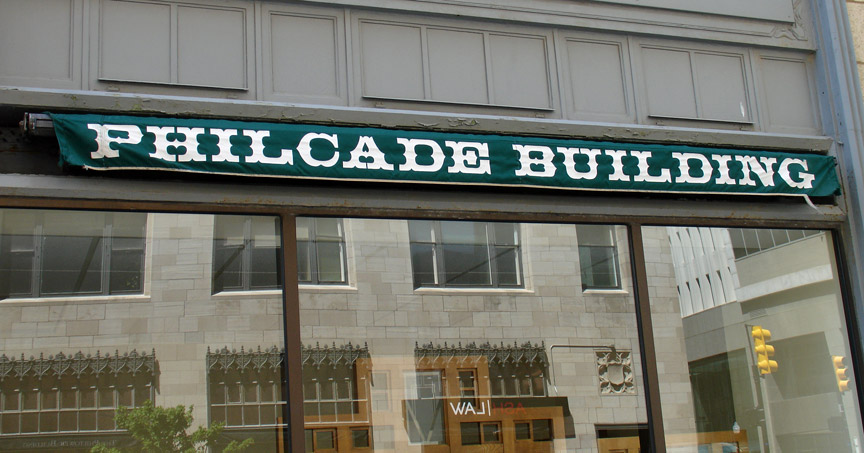
The ground floor, mezzanine, and the second floors were originally arcades
supporting commercial activities. This area of the facade is covered with a
richly carved terra cotta and cast iron veneer. The terra cotta detail at the
second level and at each corner reveals a passion for stylized flora and fauna.
Each entrance to the building is flanked by fluted Egyptian Revival columns
which terminate at a papyrus-reed inspired terra cotta beam. The large,
ground-level showcase windows and entrances are very formal. The veneer for the
office areas of this building, starting at the third-floor level and ending at
the roof line, is a very rhythmic treatment of brick and large steel double-hung
windows. The building is a prime example of the Art Deco movement in Tulsa which
ended, for the most part, with the start of the Great Depression. Its durability
is now unquestioned, and its excesses continue to delight the eye.
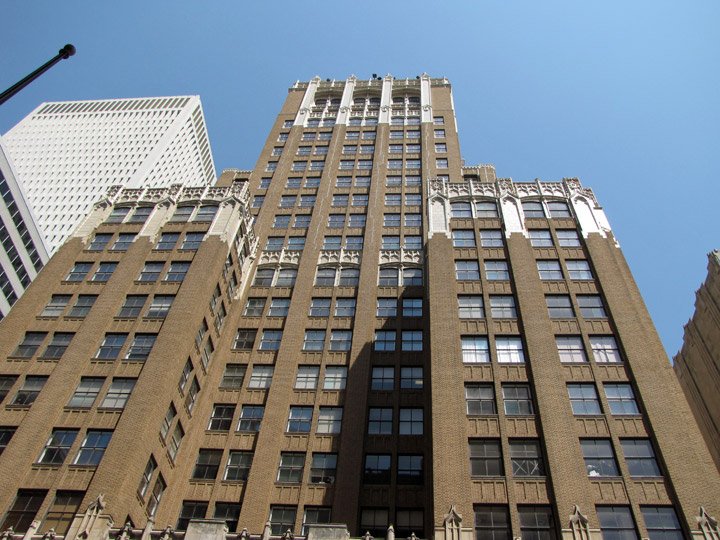
Waite Phillips, the building’s first owner, played a very important role in the
history of Oklahoma oil. The building also served as headquarters for many
developing oil companies and individuals connected with the oil industry. Many
of these companies and their descendants are still active in the Oklahoma oil
industry today.
the short description was prepared by the Tulsa Preservation Commission
